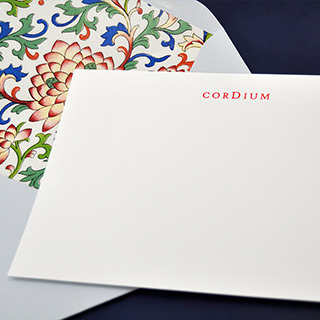What is the Rule for Wedding Invitations?
Jan 25th 2025
What is the Rule for Wedding Invitations?
When it comes to planning a wedding, one of the most important elements to consider is the wedding and reception invitations. These invitations not only communicate essential information to your guests but also set the tone for your special day. Understanding the rules for creating effective wedding invitations can reduce stress and help ensure that your guests feel informed and excited about attending.
The Basics of Wedding Invitations
The first step in understanding the rules for wedding invitations is knowing the basic components that are typically included. A standard wedding invitation will contain information about the ceremony, reception, and any additional events.
Essential Components
- Who is Hosting: Traditionally, the names of the hosts (usually the couple's parents) appear at the top of the invitation. If the couple is hosting the wedding themselves, they can use their names.
- Invitation Wording: The wording should be clear and formal. Common phrases include "request the honour of your presence" for religious ceremonies or "request the pleasure of your company" for non-religious celebrations.
- Date and Time: Be sure to include the full date (including the day of the week) and time of the ceremony.
- Venue Details: Clearly specify the location of the ceremony and reception, including the full address to avoid any confusion.
- RSVP Information: Provide a means for guests to respond, whether it is via a card included with the invitation or an email address. Including a deadline for RSVPs will ensure you have accurate numbers for planning.
The Different Types of Invitations
There are various styles for wedding and reception invitations, and understanding which one suits your wedding theme is important.
Formal Invitations
Formal invitations have traditional wording and are typically printed on high-quality cardstock. This is the most common type for traditional or religious ceremonies.
Semi-Formal Invitations
These are more versatile in terms of wording and design and can be tailored to match the vibe of the wedding. A semi-formal invitation may still present all the necessary details but allows for a more relaxed approach in language or design.
Informal Invitations
Informal invitations might use playful language and designs, perfect for casual weddings. This style is ideal for a beach wedding or a backyard celebration and can provide a personal touch.
Timing is Everything
One critical rule regarding wedding invitations is when to send them out. Typically, you should aim to send your wedding and reception invitations six to eight weeks before the wedding date. This timeline allows your guests enough time to RSVP and adjust their schedules.
Save the Dates
If your wedding is on a holiday or if you have many out-of-town guests, consider sending "Save the Date" cards four to six months in advance. This heads-up helps your guests plan appropriately, especially if they need to arrange travel or accommodations.
Special Considerations
Plus-Ones and Guest Limits
Addressing whether guests can bring a plus-one is essential. If you want to limit guests to plus-ones, be explicit in your invitation.
Children
It's also a good idea to clarify whether children are invited. This can be done directly on the invitation or through your wedding website if you choose to create one.
Final Thoughts
In summary, when crafting your wedding and reception invitations, adhere to the key elements: clear wording, essential details, and appropriate timing. Keep in mind the styles of invitations that will best reflect your wedding theme and the expectations you have for your guests. Understanding the nuances of wedding invitations will help ensure that all your guests feel welcome and prepared for your special day. With thoughtful consideration, your invitations can be a beautiful introduction to the love and joy your wedding will bring.




